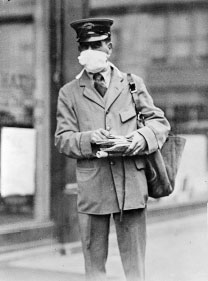The COVID-19 pandemic has certainly rearranged our lives for the time being. Children are out of school for the foreseeable future, families are sheltering at home; and while some parents are able to work from home, some face an uncertain future. Most churches are shut down, at least in terms of congregations getting together in person.
Amid sudden changes, the threat of disease, panic shopping, school shutdowns, some worry about what social distancing and self-imposed isolation are going to do to our children.
In all probability, the kids are going to be alright.
 This is not the first time we’ve faced a pandemic. The Spanish Flu outbreak of 1918 killed over 50 million worldwide.1 Masks were in vogue, in some parts of the U.S., public meetings were cancelled and women and children were ordered to stay home for the duration of the epidemic.2 Austin American Statesman reporter Michael Barnes reports that in 1918, the city was “shuttered for almost a month.” 3 The University of Texas, lodges, all churches and places of “public assemblage” were shut down.4
This is not the first time we’ve faced a pandemic. The Spanish Flu outbreak of 1918 killed over 50 million worldwide.1 Masks were in vogue, in some parts of the U.S., public meetings were cancelled and women and children were ordered to stay home for the duration of the epidemic.2 Austin American Statesman reporter Michael Barnes reports that in 1918, the city was “shuttered for almost a month.” 3 The University of Texas, lodges, all churches and places of “public assemblage” were shut down.4
In other words, social isolation in the face of pandemic is not unprecedented.
Social isolation and a truly deadly pandemic in 1918 did not cause a spike in teen suicides. While there was a brief spike during the Great Depression, teen suicides generally trended downward until the mid-1950’s.5
Ironically, the mid-1950’s were the beginnings of modern psychiatry, with the introduction of the “blockbuster” antipsychotic drug Thorazine. This was followed in rapid succession by many other drugs.
 Finding Comfort and Safety
Finding Comfort and Safety
Amid the health and financial uncertainties of a state and national “lockdown” there are some things you may find comforting:
First, asking you to shelter is not meant to be an attack on your liberties. It is a public health protocol to help us all survive a disease outbreak.
Second, there are simple things you can do to minimize risk. Minimizing contact with others outside your household, handwashing, house cleaning and other hygiene and sanitation practices can help. Seeking medical care and isolating yourself from others if you become sick; and insisting others do the same, can help.
Third, home education resources are more available than ever. In addition to the considerable home education resources already available on the internet, some public school systems are getting into the act.
Fourth, Texans can call 2-1-1 for information and for services including unemployment assistance, emergency food assistance and more.
Fifth, your church may be closed for services but remember that church is more than a building or a time of the week. Many churches are conducting remote services streamed on Facebook or other social media outlets. At least some can be reached by phone if one needs personal assistance. Faith communities are a huge source of social and spiritual support. It should come as no surprise that at least one study looking at the benefits of religion following a major disaster concluded that religious coping was “vital for many individuals and families.” 6
Stay well. Stay safe. Take some time to enjoy your family. It’s very likely that things are going to be alright.
End Notes
- https://www.archives.gov/exhibits/influenza-epidemic/
- https://www.archives.gov/exhibits/influenza-epidemic/records-list.html
- https://www.statesman.com/news/20200319/coronavirus-in-austin-weve-been-here-before-austin-found-podcast-on1918-pandemic-andnow
- https://www.statesman.com/news/20200307/during-worst-pandemic-in-modern-times-austin-shut-down-for-almostmonth
- https://www.ncbi.nlm.nih.gov/pubmed/3580062
- https://www.ncbi.nlm.nih.gov/pmc/articles/PMC3548597/

